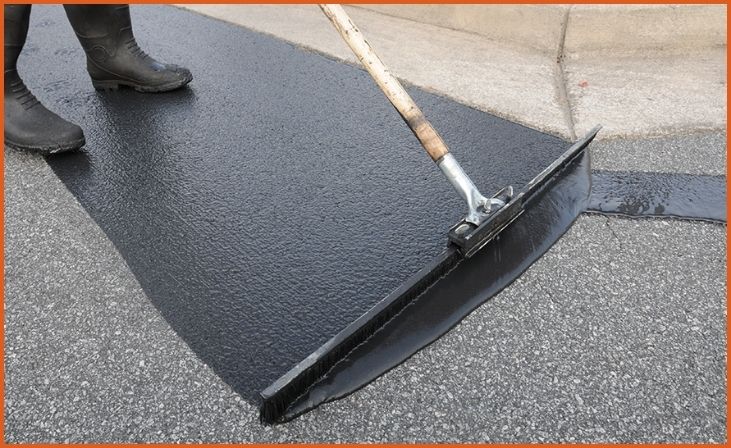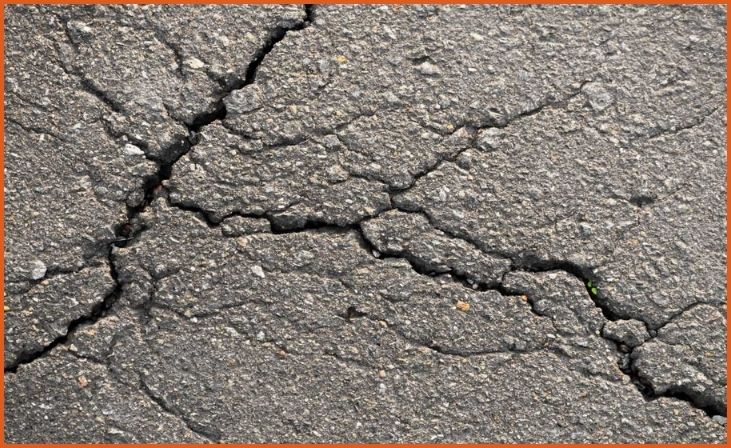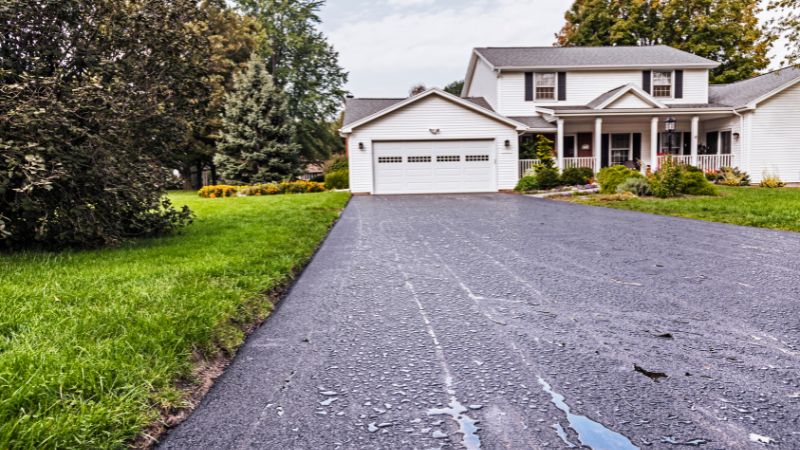Asphalt pavement is a popular choice for roadways and driveways due to its durability and cost-effectiveness. However, like all surfaces, asphalt can deteriorate over time due to factors such as weather conditions, heavy traffic, and aging. Regular repairs are essential to maintain its functionality and appearance. It might be beneficial for property owners and maintenance specialists to have a basic understanding of standard asphalt pavement repair processes when deciding on their restoration approaches. From simple crack sealing to more extensive resurfacing, these techniques address various issues to extend the life of your pavement and ensure a smooth driving surface. In this blog, we’ll explore nine effective repair methods that can keep your asphalt in top shape.
9 Common Asphalt Pavement Repair Techniques
1. Crack Sealing

Crack sealing is a fundamental asphalt pavement repair technique designed to address minor surface cracks that can lead to more significant issues if left untreated. This method involves cleaning out the cracks and filling them with a sealant material. The process starts with a thorough cleaning of the cracks to remove debris, dirt, and vegetation. A wire brush or high-pressure air blower is often used for this task. Next, a hot or cold sealant is applied to fill the crack, ensuring that the material adheres well and forms a tight seal. This technique helps prevent water infiltration, which can cause further deterioration of the asphalt and underlying base. Crack sealing is cost-effective and can extend the life of your pavement by stopping small problems from escalating into larger, more expensive repairs.
Also Read:- Asphalt Maintenance Tips For Winter
2. Patching
Patching is a common repair method used to address localized areas of asphalt damage, such as potholes or severe surface cracks. Using this method, the damaged asphalt is removed and replaced with fresh asphalt. The process begins with cutting out the affected area, ensuring that all damaged and deteriorated asphalt is removed. The base layer is then prepared, often requiring compaction to ensure stability. Once the base is ready, a new layer of asphalt is applied, compacted, and smoothed to match the surrounding surface. Patching is effective for dealing with small to moderate damage and is often used in conjunction with other repair methods to maintain overall pavement integrity. Regular patching helps prevent the spread of damage and can significantly enhance the surface’s safety and appearance.
3. Resurfacing
Resurfacing, also known as overlaying, is a comprehensive repair technique that involves applying a new layer of asphalt over an existing surface. This method is typically used when the pavement has widespread surface issues but the underlying structure remains sound. The process starts with a thorough cleaning of the existing pavement to remove debris and loose material. In some cases, minor repairs, such as crack sealing and patching, are performed before the resurfacing. A layer of hot mix asphalt is then spread over the surface and compacted using specialized equipment. Resurfacing helps to restore the pavement’s smoothness, improve its appearance, and extend its lifespan. This technique is a cost-effective way to address aging or worn-out asphalt without completely removing and replacing the old pavement.
4. Sealcoating

Sealcoating is a preventive maintenance technique used to protect asphalt pavements from environmental damage. It involves applying a protective coating over the surface to shield it from elements like UV rays, water, and chemicals. The sealcoat material, typically a mix of asphalt emulsion and additives, is applied to the surface using a sprayer or squeegee. The coating forms a protective layer that helps to prevent oxidation, reduce the effects of water infiltration, and enhance the pavement’s appearance. Sealcoating is usually performed every 2 to 3 years, depending on traffic conditions and environmental factors. This technique is beneficial for maintaining the pavement’s flexibility and durability, preventing costly repairs, and extending the overall life of the asphalt.
5. Infrared Repair
Infrared repair is a modern technique used for addressing surface-level issues such as cracks and raveling by using infrared technology to heat and rejuvenate the existing asphalt. The process begins with heating the damaged area using an infrared heater, which raises the temperature of the asphalt to a point where it becomes pliable. Once the asphalt is heated, it is scarified and mixed to remove any damaged material. New asphalt is then added, and the area is compacted to blend seamlessly with the surrounding pavement. It is possible to solve problems with infrared repair without replacing or removing a large portion of the asphalt. It provides a quick and efficient solution for repairing localized damage while minimizing disruption and preserving the integrity of the surrounding surface.
6. Full-Depth Reclamation
Full-depth reclamation (FDR) is an extensive pavement repair technique used for addressing severe asphalt deterioration. This method involves milling the entire thickness of the existing asphalt and mixing it with the underlying base material to create a new, improved base layer. The process begins with milling the asphalt surface to a specified depth, often involving the full thickness of the pavement. The milled material is then mixed with additives, such as cement or lime, to enhance its properties. The mixture is compacted and used as the new base layer for the pavement. After that, a fresh coat of asphalt is put on top. FDR is particularly useful for pavements with extensive damage, providing a long-lasting solution that restores the structural integrity of the surface and improves overall performance.
7. Edge Repair

Edge repair focuses on addressing damage that occurs along the edges of asphalt pavements, often due to erosion, traffic wear, or improper drainage. This repair technique involves removing the damaged edge section and replacing it with new asphalt. The process starts with cutting out the damaged edge material and preparing the base for the new asphalt. In many cases, additional work is done to improve drainage and prevent future erosion. Once the base is prepared, new asphalt is applied, compacted, and blended with the existing surface. Edge repair helps to prevent further deterioration of the pavement and maintains the overall appearance and functionality of the pavement. This technique is essential for preserving the structural integrity of the edges, which are critical for guiding traffic and preventing material loss.
8. Tack Coat Application
Tack coat application is a technique used to enhance the bonding between new and existing asphalt layers. This process involves applying a thin layer of tack coat material, usually an asphalt emulsion, to the surface of the existing pavement before placing a new layer of asphalt. The tack coat acts as a bonding agent that helps to ensure a strong and durable connection between the old and new layers. The application is typically done using a sprayer, and the tack coat is allowed to cure for a specified period before the new asphalt is applied. Proper tack coat application is crucial for preventing delamination, which can lead to premature failure of the new asphalt layer. This technique is commonly used during resurfacing projects to improve the overall performance and longevity of the pavement.
9. Joint Sealing
Joint sealing is a repair technique used to address the expansion and contraction joints in asphalt pavements. These joints, which are designed to accommodate thermal movement, can become a source of water infiltration and damage if not properly sealed. The joint sealing process involves cleaning out the joint to remove debris and old sealant material, followed by the application of a new sealant designed to fill and protect the joint. Various types of sealants, including hot-poured and cold-applied materials, are used depending on the specific requirements of the pavement. Proper joint sealing helps to prevent water intrusion, reduce the risk of joint deterioration, and extend the lifespan of the pavement. This technique is essential for maintaining the integrity of asphalt surfaces, particularly in regions with significant temperature fluctuations.
Also Read:- Common Asphalt Paving Mistakes
Conclusion
Effective asphalt pavement repair is crucial for maintaining the longevity and safety of your surfaces. By familiarizing yourself with common techniques like crack sealing, patching, and resurfacing, you can address issues before they escalate. Maintaining your pavement regularly keeps expensive repairs from happening later on and improves its look. Whether you’re a homeowner or a property manager, implementing these repair strategies will help you keep your asphalt in excellent condition. Stay proactive, and your pavement will remain functional and aesthetically pleasing for years to come.
FAQs
What is crack sealing in asphalt repair?
Crack sealing involves filling and sealing cracks in the asphalt to prevent water infiltration and further damage. It’s a common method used to address minor surface issues and extend the lifespan of the pavement.
When should I consider resurfacing my asphalt pavement?
Resurfacing is recommended when the asphalt surface has widespread cracks, potholes, or signs of significant wear. It involves applying a new layer of asphalt to improve the surface’s appearance and functionality.



